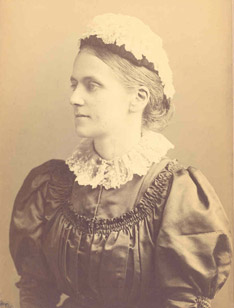The Centre for the History of the Emotions is pleased to announce the program for lunchtime work-in-progress seminars over the coming semester.
Our first session will take place on Wednesday 10 February and we are delighted to welcome Aleksondra Hultquist (Australian Research Council Centre of Excellence for the History of the Emotions) who will give a paper titled: The Emotional Practice of the Amatory: Barker, and Haywood (abstract below). Lunch will be provided from 12.45 and the paper will begin at 1.
All welcome but for catering purposes please rsvp to emotions@qmul.ac.uk if you plan to attend. Further sessions listed below.
The Emotional Practice of the Amatory: Barker, and Haywood:
Amatory fiction supposedly has its basics established: we know its three primary authors (the “triumvirate of Wit:” Behn, Manley and Haywood), we understand its purpose (to warn women readers against seduction), its tell-tale structure (the almost serial repetition of seduction and abandonment), its purpose (to mask political discontentment through sexual tragedy). There are full length studies on the genre (Ros Ballster’s Seductive Forms, 1992 and Toni Bowers’ Force or Fraud, 2012). But recently attention to areas of affect theory, including the history of emotion, demonstrates that much of our information about this genre is ripe for reconsideration. Most critical evaluations of amatory discourses articulate its significance in terms of its metaphorical power to embody political struggles; Ballaster and Bowers have provided especially articulate readings exploring the romans a clef aspects of these works and the power that sexual narratives can play in political discourses. This paper resituates amatory fiction’s critical emphasis from political discourse to a discourse of emotional education. I argue that the experience and navigation of extreme emotion and the subsequent maturity of characters after seduction or the threat of seduction are exactly the focus of these tales.
This paper argues for how the genre of amatory fiction becomes the “amatory mode,” a literary technique based on a vocabulary of the passions. Created and regulated according to the love and sex narrative, the emotions of amatory fiction—primarily desire, love, jealousy, and revenge—enable us to classify the form more precisely than current definitions, which center on specific authors, prose structures, and a political resistance to patriarchal authority. If read as a playbook in Monique Scheer’s configuration of “emotional practice”—the mobilization, designation, communication, and regulation of emotion—the genre moves to a mode. Haywood’s The City Jilt (1726) illustrates one of the many plots of amatory fiction where love, jealousy, and revenge become the impetus for narrative structure and a redefinition of female subjectivity. I read this work alongside of Barker’s Love Intrigues (1713) to delineate amatory fiction’s emotional, rather than formal, structure. This cross-genre approach clarifies the emotional practices these authors developed. While Haywood, and Barker’s fiction often seem to accomplish different literary labor, their articulation of the passions is complementary: Barker’s “patchwork narrative” examines the detriments of not understanding or engaging in passionate emotion. Haywood’s amatory tale examines how to survive the fallout of an emotional affair without long-term emotional or social damage. Such analysis highlights the oxymoronic realities of sex for amatory authors. Their heroines elevate whole-hearted emotional engagement above socially prescribed roles, and, despite getting swept away by the wrong kind of love, they ultimately achieve a kind of agency and self-knowledge that is denied to characters who rebuff their passions.
——————————
Full Schedule:
Wednesday 10 February, 1pm (Arts Two: 3.16)
Aleksondra Hultquist (Australian Research Council Centre of Excellence for the History of the Emotions) The Emotional Practice of the Amatory: Barker, and Haywood
Wednesday 17 February, 1pm (Bancroft 4.24)
Jules Evans (QMUL) The decline and revival of ecstasy in western culture
Wednesday 9 March, 1pm (Arts Two: 3.16)
Two short talks from the new Project Managers in the Centre for the History of the Emotions:
Helen Stark (QMUL) A “Charnel-Vault”: Corpses in Walter Scott’s Paul’s Letters to His Kinsfolk
Sarah Chaney (QMUL) Trigger Happy: Self-harm and emotional contagion in the 21st century
Wednesday 23 March, 1pm (Arts Two: 3.16)
Sarah Marks (University of Cambridge) Was there a Communist psychiatry in Cold War Eastern Europe?
Wednesday 30 March, 1pm (Arts Two: 3.16)
Simeon Koole (University of Oxford) History of the Caress: Tactility, Teashops, and the Organisation of Desire
Monday 25 April, 1pm (Laws 3.08C)
Åsa Jansson, ‘Emotional Regulation’ and Dialectical Behaviour Therapy in Sweden, c. 1995-2010



